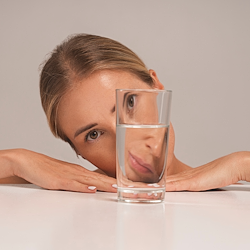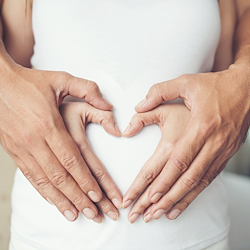LEHVOSS News
- Details
- Written by: Natasha Ghanimeh

A big thank you from the LEHVOSS team to everyone who visited us at Vitafoods 2025 – the first-ever edition held in the vibrant city of Barcelona. Your energy, curiosity, and conversations helped make this landmark event a tremendous success.
Couldn’t make it? No problem – click here to download our Vitafoods 2025 Show Highlights and catch up on all the key moments, innovations, and insights we shared. One of the week’s true highlights was our exclusive customer event, where we welcomed guests from around the world for an unforgettable evening of connection, celebration, and collaboration. Thank you for being part of it!
Exciting news! We have booked the same venue for our 2026 Customer Event! Mark in your diary the 5th of May and party with us again!
- Details
- Written by: Natasha Ghanimeh

Exciting new research has been published (April 2025) demonstrating how Witholytin®, our branded, natural ashwagandha, significantly influences mitochondria in cortical neurons whilst also potentially bolstering stress adaptation and neuroprotection.
Data suggests these effects are driven by interactions with Brain Derived Neurotrophic Factor (BDNF) which are essential for neuron support and growth, and Sirtuin 1 (SIRT1) signalling which is crucial for neuronal development and metabolic balance during aging.
These initial findings propose that Witholytin® could enhance the creation of new mitochondria (mitochondrial biogenesis) and also improve neuroenergetics – the production, distribution and utilisation of energy within the brain – in cortical circuits.
- Details
- Written by: Natasha Ghanimeh

Beyond water and electrolytes, iodine is a key – often overlooked – component of hydration. Best known for supporting thyroid health, iodine is essential for producing hormones like T4 and T3, which regulate metabolism and influence how cells manage water1.
Our recently launched, innovative PureSea® Protect – a microencapsulated seaweed – is a natural source of iodine that blends easily into a variety of delivery formats, offering excellent water dispersion without the typical taste or aroma of the sea plus the benefit of a neutral colour. It’s an ideal choice for hydration or active nutrition blends and may help support water balance and metabolism.
A healthy thyroid, supported by adequate iodine, may help promote proper fluid distribution and kidney function.
- Details
- Written by: Natasha Ghanimeh

At LEHVOSS Nutrition, we are dedicated to sourcing and offering the highest quality ingredients as part of our Essentials portfolio, which is why we are delighted to introduce a new addition to our range: L-5-Methyltetrahydrofolate calcium powder (L-5-MTHF Ca). This ingredient belongs to the folate group of vitamins (Vitamin B9), and its best known as a biologically active and functional form of Folic Acid.
Our Folate L-5-MTHF-Ca has a minimum 99.7% L-5-MTHF-Ca purity, and very good stability matched with a longer shelf life – compared to standard Folic Acid. According to research, Folate L-5-MTHF-Ca is recognised by the body as a “finished” folate, meaning that the human body can utilise it almost immediately without any metabolising required – making it an ideal solution for those suffering with metabolic issues1.
- Details
- Written by: Natasha Ghanimeh

Sustainability is central to Verdure Sciences®’ mission. A clear example is their Bacognize®, Bacopa Extract, where traditional millet and rice farmers now grow bacopa. This initiative supports local communities by providing steady jobs for labourers, positively impacting numerous families. As a result, farmer retention – which started in 2019 – remains strong today.
To ensure high quality and efficiency, polyhouse drying technology has been implemented to reduce drying time by 50% compared to traditional sun drying and in addition, minimise fungal contamination. The entire farming cycle is led by a community farmer group, which oversees operations and receives support at every stage. Expanded warehouse capacity now stores up to 250 metric tons of dried bacopa, ensuring year-round supply and reduced waste. See the impact yourself: Download our Sustainability Report.
- Details
- Written by: Natasha Ghanimeh

Univestin® is a unique and natural, plant-based formula designed for humans that is clinically proven to provide fast relief from joint discomfort. Containing two primary actives – baicalin and catechins – this botanical combination was screened from over 1230 medicinal plants, using Unigen’s PhytoLogix®.
Mirroring trends in the human personal wellness sector, the pet-health market shows significant growth. This opens avenues for companies to diversify into pet health, potentially by introducing a valuable product like Anivestin™ to their product line! Anivestin™ features the same plant-based composition, but is tailored to alleviate joint discomfort in animals while also promoting oral health. Research has demonstrated that these two extracts work synergistically in-vivo to produce an analgesic and anti-inflammatory effect, with regards to both onset and duration.
- Details
- Written by: Sarah Gates

Join the LEHVOSS team in the vibrant city of Barcelona from 20–22 May at STAND 3J70. We are looking forward to welcoming you and sharing our latest innovation in nutraceuticals, minerals and excipients, ground-breaking research, and forward-thinking developments designed to help you formulate the future.
Our high-quality PHARMAGNESIA® minerals will surprise you with outstanding solubility, excellent compressibility for tablet production, and the high purity and quality you expect from us.
As part of our range of branded ingredients, we will highlight Zooca® Calanus® Oil, a sustainable, rich oil from Calanus (zooplankton) and Benicaros®, a “precision” prebiotic, clinically researched for immune and gut health. Looking at innovative solutions, we will showcase PureSea® Protect, a natural source of iodine, with extremely low seaweed flavour and aroma and excellent dispersion in water.
- Details
- Written by: Sarah Gates

We are excited to introduce our new, high-quality Resveratrol (99%), produced through fermentation. Known for its powerful antioxidant properties, Resveratrol has gained significant attention for its wide-ranging benefits, especially for women’s health1-3.
Sourced from trusted partners and rigorously tested by our regulatory team, this product ensures both safety and effectiveness. It is suitable for vegetarians and vegans, providing a natural way to support overall health, and is also Novel Food compliant.
Thanks to the fermentation process, our Resveratrol offers purity, consistency, and sustainability, free from the impurities or harsh solvents often found in plant-based versions. Fermentation-derived Resveratrol delivers high-quality, eco-friendly benefits, all while eliminating the need for large-scale plant harvesting.
- Details
- Written by: Sarah Gates

WokVel® is a sustainable, high-quality Boswellia serrata extract, standardised to provide a proprietary full spectrum of six key boswellic acids. Whether you're developing supplements for humans or creating pet care products, this unique extract targets 5-lipoxygenase (5-LOX), a key enzyme involved in joint inflammation, helping to support joint integrity and promote healthy aging for both humans1-3 and companion animals4.
WoKVel® is completely traceable and clean-label, supporting sustainability through Verdure Sciences®' Verdugration® program, which promotes ethical sourcing, environmental responsibility, and transparent global stewardship. Manufactured in a botanicals-only, vertically integrated facility, WoKVel® meets the highest quality standards, with GMP certification from third-party auditors like NSF International.
- Details
- Written by: Sarah Gates

At LEHVOSS Nutrition we are always looking for high-quality products to include in our innovative portfolio “Essentials by LEHVOSS” which is why we are pleased to bring Griffonia to you. Our Griffonia Seed Extract is plant-based, and is standardised to minimum 30% 5-HTP (5-hydroxytryptophan). Not only this, but this product does not contain any carriers.
Meeting the demands of today's market, our Griffonia Extract offers a versatile solution for vegetarian and vegan diets, whilst also complying with EU Regulations. Additionally, this product is sourced from our approved partners and rigorously tested by our expert regulatory team.
The role of Griffonia in anti-depressant and anxiety treatment has been reviewed by many, with several studies exploring its benefits1-3.



 A big thank you from the
A big thank you from the  Exciting
Exciting  Beyond water and electrolytes, iodine is a key – often overlooked – component of hydration. Best...
Beyond water and electrolytes, iodine is a key – often overlooked – component of hydration. Best...  At
At  Sustainability is central to Verdure Sciences®’ mission. A clear example is their
Sustainability is central to Verdure Sciences®’ mission. A clear example is their 









































